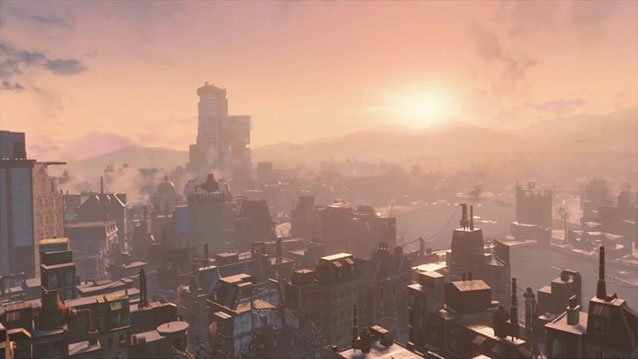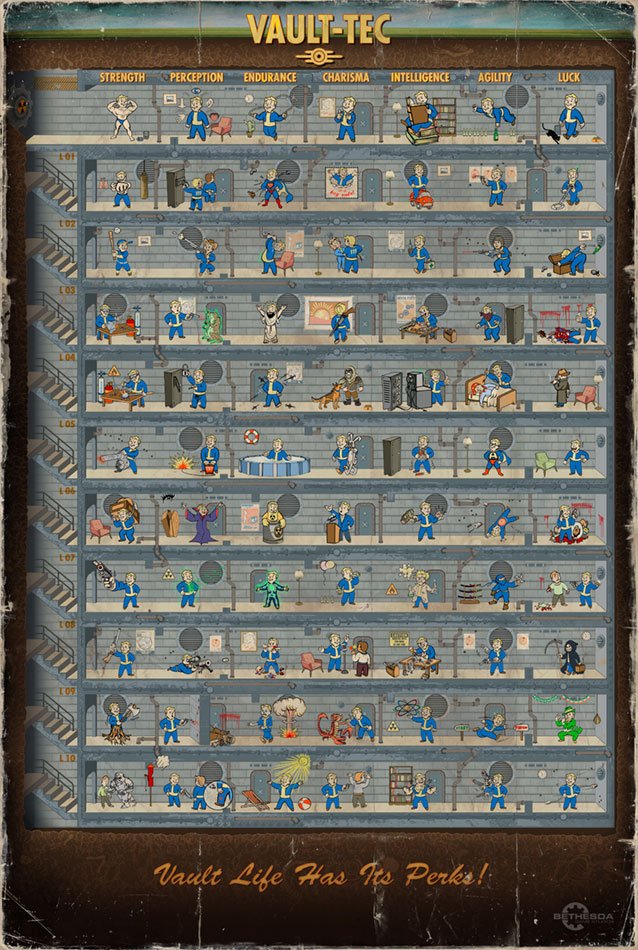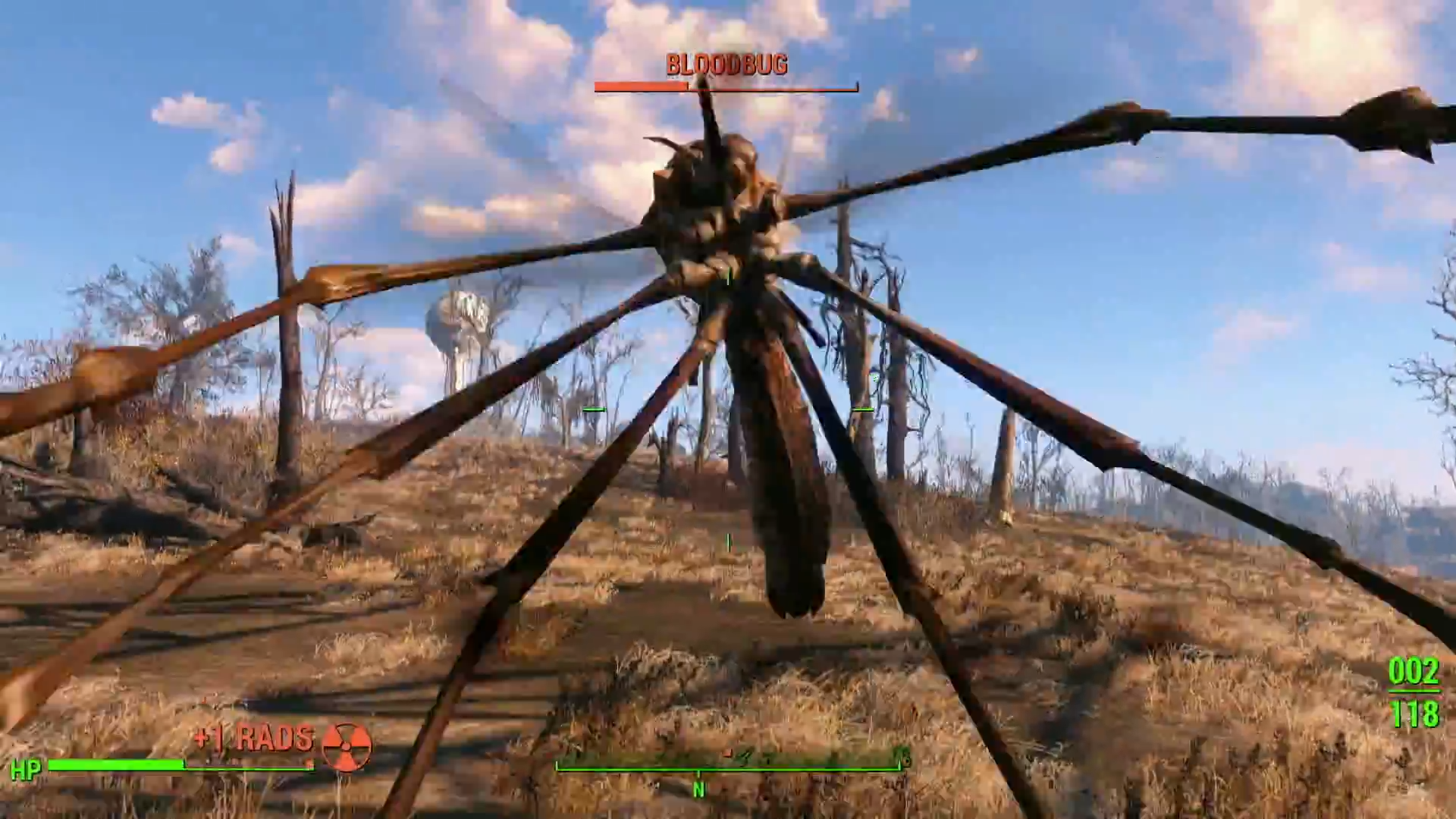

 With less than two weeks to go until the release of Fallout 4, it’s time to review all the tasty tidbits released through various podcasts, livestreams, video snippets, trailers, concept art, and screenshots over the past year. Now, considering the game has over 400 hours of content, what we’ve compiled here is just the tip of the iceberg, so consider this your mere introductory course to Fallout 4, a little something to tide you over until the big day arrives. Here’s Everything We Know So Far About Fallout 4.
With less than two weeks to go until the release of Fallout 4, it’s time to review all the tasty tidbits released through various podcasts, livestreams, video snippets, trailers, concept art, and screenshots over the past year. Now, considering the game has over 400 hours of content, what we’ve compiled here is just the tip of the iceberg, so consider this your mere introductory course to Fallout 4, a little something to tide you over until the big day arrives. Here’s Everything We Know So Far About Fallout 4.
The player character of Fallout 4 is referred to as the Sole Survivor. He emerges from Vault 111 in an area referred to as Sanctuary Hills. The purpose of Vault 111 was a cryosleep experiment that at some point went horribly wrong, leaving our Sole Survivor as, well, the sole survivor. He has a son named Shaun, whose status is currently unknown. Before the bombs fell, the Sole Survivor had a Mr. Handy butler known as Codsworth, who can act as a companion and join you in your journey. Codsworth was showcased extensively during the lead-up to the release of Fallout 4, and in the game he is missing the robot model’s standard flamethrower attachment.

The greater setting of Fallout 4 is referred to as The Commonwealth, a place first mentioned in Fallout 3 by Dr. Zimmer in the mission The Replicated Man. For those who have keen discerning eye for bullshit, Fallout 4’s home location of Boston comes as no surprise, as leaked documents over the years long ago gave hints of what was to come. From the trailers and images released in wake of the game’s official announcement, we’ve learned about the existence of a number of pre-War locations still intact, and were able to decipher some of the other post-War designations as well. Within Boston and its greater metropolitan area remains the Bunker Hill memorial, Scollay Square, a 1950s-era location that no longer exists (a nod to Fallout’s divergent historical fiction timeline), and its sublocation Memory Den, which was seen in the Fallout 4 trailers and seems to house some sort of simulation memory pods, the USS Constitution, a 3-masted, 44-gun frigate built in North Boston in 1797 that was used in the War of 1812 and has now been outfitted with rockets, the Paul Revere monument, Fenway Park, and the Massachusetts State House.

While it is currently unknown if Boston was hit by bombs during The Great War directly, it is known that the outlying areas were hit at least once, resulting in a highly irradiated area known as the Glowing Sea, a former nuclear detonation test site that is now the source of radiation storms that plague the Commonwealth. The neighborhoods of Concord and Lexington, the site of key battles during the Revolutionary War, remain intact. In Concord, the Museum of Freedom plays a part in one of the main missions, when the Sole Survivor fights their way through the building to meet Preston Garvey, the leader of the Commonwealth Minutemen and a potential companion for the player character. Meanwhile Lexington is possibly home to a chapter of the Brotherhood of Steel, as well as a Super-Duper Mart and a Corvega power plant, two locations that no doubt will strike Fallout 3 fans right in the nostalgia feels.

Diamond City is a major fortified settlement in Boston that has been built from what remains of Fenway Park. The citizens there wear baseball uniforms, though whether it’s out of necessity or as an homage to the site’s past is unknown. This is where you first meet grumpy old Mayor McDonough, the leader of the settlement, and Piper, a woman cast out for her work on their local newspaper (and another potential Sole Survivor companion). Their gatekeeper, Danny, lets the Sole Survivor in under the guise of a trader named Quincy. Perhaps thanks to a robust trade system or maybe due to the protection afforded by the walls of Fenway Park, Diamond City is somewhat prosperous, as evidenced by the many shops seen in the trailer, including Chem-I-Care, Power Noodles, Commonwealth Weaponry, Diamond City Surplus, Swatters, and a schoolhouse. The are also home to their own radio station, Diamond City Radio, though it is unclear if The DJ, a character revealed through an IMDB listing, or Classical Radio, another radio station, is there as well.

Many other locations have shown up in the trailers and concept art without any further information, and they include the Old North Church, Logan International Airport, and a Quarry, which local Boston history indicates may be located in Quincy, another area mentioned in passing.

From concept art we know there is a ghoul character named John Hancock, but it is unknown if this figure will be in the final version of the game. The Art of Fallout 4 book also reveals a character called Tinker Tom, however his context within the game is unknown.
Dogmeat makes a return as a companion for the player character, though how he got to the Red Rocket station near Sanctuary Hills is a mystery. Dogmeat, like his Fallout 3 version, can be used to fetch items of value like ammunition, only this time he can loot with a hovering line of text instead of requiring a command from the dialogue tree. Initially his name in the game is simply “Dog”, with another character later explaining his full name. Uh, omg, could it be The Lone Wanderer?

Fallout ain’t Fallout without various factions of survivors fighting for power, and so far we know that the Brotherhood of Steel once again makes an appearance, this time with access to airships like the Prydwen and Vertibirds, such as the Enclave had in Fallout 3. Another faction to contend with are the Commonwealth Minutemen, who the Sole Survivor encounters at the Museum of Freedom in Concord, and of course Raiders, who despite their affinity for chems never die off completely.
Some of what we know about the factions of Fallout 4 actually comes from Fallout 3, courtesy of the scientist Dr. Zimmer, who visits Rivet City in pursuit of a runaway android named Harkness. Androids are the result of experiments at The Institute, a facility in The Commonwealth (probably the remnants of M.I.T. in Boston). They are so realistic and life-like that they can gain a near-human level of sentience. It is very likely that The Railroad, an underground resistance movement aiding the Androids, and Synth Retention Bureau, an arm of the Commonwealth Police dedicated to tracking down runaway androids, play a part in the Fallout 4 story.

What we know of the creatures of Fallout 4 so far is mostly limited to the ones encountered in Fallout 3. You’ll find the garden variety ghouls, feral ghouls, Raiders, Super Mutants (with a new variety known as Skirmisher), dogs, Brahmin, Mole Rats, Yao guai, Deathclaws, Mirelurks, Mirelurk Queens, and Radscorpions, as well as a mutated mosquito called a Bloodbug. On the robot side of things, you’ll find such familiar faces as the Eyebot, Mister Handy, Protectron, and Sentry Bot, the latter with a new variation called the Siege Breaker Sentry Bot. The Sole Survivor will also be up against Synth, a name for the Androids created by The Institute, with known variations Assaulter and Strider.

Settlements are a new Fallout feature, one that seems at least partially inspired by previous Fallout mods like Real Time Settler, and the house building aspects of the Hearthfire DLC from The Elder Scrolls V: Skyrim. The Sole Survivor can establish a settlement in a number of in-game locations, building a homebase from scratch by scrapping items for parts and assembling them into pre-fab structures. The bases can then be customized and decorated, defenses can be built to protect it from Raiders and wasteland creatures, and eventually, a trading post can be established to encourage growth. A number of stats will figure into the settlement’s ability to grow, known as Necessities, and they include including People, Food, Water, Power, Safety, Happy, and Beds. Each of these qualities will rely on others, called Dependencies. For instance, your level of Happy will depend on the Power, Size, and number of Beds in your settlement. Two Perks, Hacker and Local Leader, are tied to the efficient growth and management of your settlement.

One unexpected area of change in the game is the armor and clothing. There's now a layered armor system that allows you to customize parts of the armor you equip, including Power Armor. It is a part of a much larger crafting system that allows you to fully customize your armor and weapons, constructing various upgrades by breaking down items for components. The player dons a base layer of clothing, like a Vault uniform, and then an armor layer that allows you to designate specific pieces for your head, chest, and individual arms and legs. Known examples of armor mods include paints, plating, and shielding that provide additional boosts, including Agility increasing Atom Cat Paint, Strength increasing Military Paint, Vault Tec Paint, radiation resistant lead plating, and explosion resistant explosive shielding.

Expanding on the weapon mods and crafting systems first introduced in Fallout: New Vegas, weapons can now be modded at work benches, with over 700 various mods are available. Raw materials broken down from everyday items found in the game will comprise the ingredients necessary to make them. The mods will include performance boosting items like bigger magazines, lengthened barrels, silencers, and the like. Modifying weapons or armor will result in a small amount of XP for the player.

The Perks and Skills systems are now linked. There are 70 perks with 275 total sub-ranks, and each perk is categorized by the amount of points invested in a SPECIAL characteristic necessary to unlock it. Each rank that the player invests into each perk will improve its performance. One very interesting Luck-based Perk to note: at Rank 4, the Mysterious Stranger perk will give you a 30% chance that the Mysterious Stranger will accompany you for a short while after V.A.T.S. combat, possibly even engaging in dialogue with you and taking commands!
Fallout 4 Trophies and Achievements List
50 Things You Didn't Know About Fallout
Fallout 4: 10 New Things You Need to Know
Fallout 4: 10 Things We Don't Want
Fallout 4: The Deleted Trailer




 Fallout 4: How to Beat the Mirelurk Queen
Fallout 4: How to Beat the Mirelurk Queen The Witcher 3 Patch 1.07 MegaGuide: List Of All Bugs, Technical Issues and How To Fix Them
The Witcher 3 Patch 1.07 MegaGuide: List Of All Bugs, Technical Issues and How To Fix Them 4 Steam Skins That Will Blow Your Mind
4 Steam Skins That Will Blow Your Mind Dead Island Tips and Cheats
Dead Island Tips and Cheats Wolfenstein: The New Order Walkthrough Guide Part 10 - Berlin Catacombs gliding for the gold snake
Wolfenstein: The New Order Walkthrough Guide Part 10 - Berlin Catacombs gliding for the gold snake